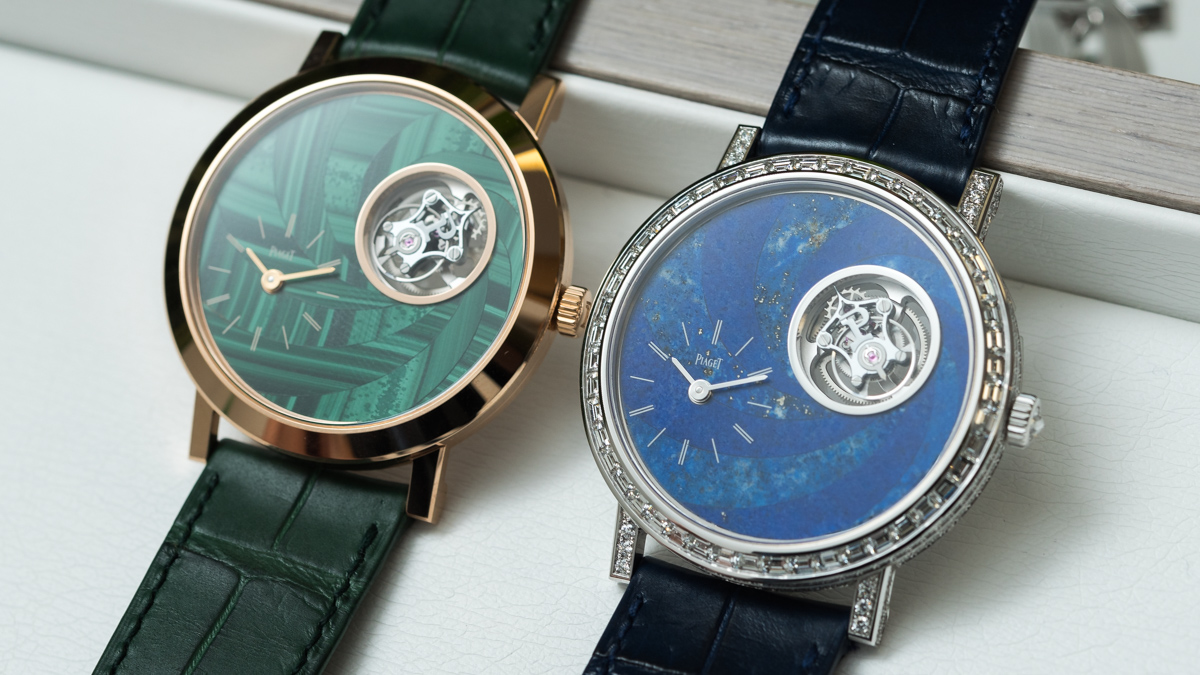
A week has passed already and SIHH is still but a blur… And if I was to pick the blurriest part of all, it would be the windows of the booths – but only after the countless straight faces that fly past me in that utterly beige interior of the fair. When rushing from one 30 to 60 minute one-to-one appointment to the next, I always had to be head-deep in my phone or some other consumer electronic device that demanded my attention, leaving time only to wave hello to friends and colleagues, but none for window shopping. As such, in this week-long marathon most all windows with pretty watches, I did not get to see at all… And yet, I could not miss this Piaget 8532 Replica Altiplano Flying Tourbillon, with its green malachite marquetry dial – it was almost begging for attention, even though it was not in a prominent location of the Piaget booth. Fortunately, I had a chance to go hands-on with it and its blue, lapis lazuli marquetry dial counterpart.
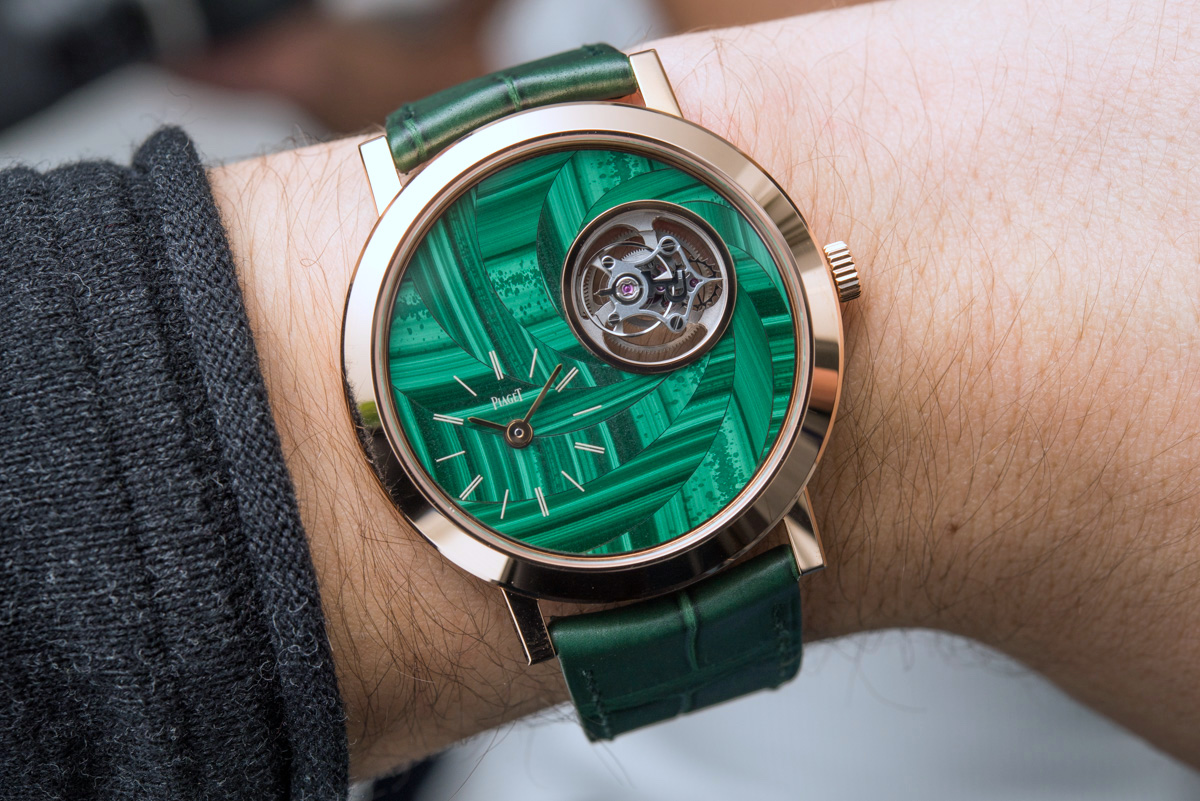
All watch images by David Bredan. Work in process images from Piaget.
On a personal note, I will say that, for a number of reasons, this green dial Altiplano was a textbook example of falling in love at first sight. Everything about it, to me at least, seemed both charmingly surprising and reassuringly familiar; unique and yet natural. It was all lovely in the truest sense of the word. Utterly typical for such affairs, it was only after a while that I began to see its flaws and I am yet to accept them – clearly, the first impression was just too neat for its own good. Let’s begin with the positives.
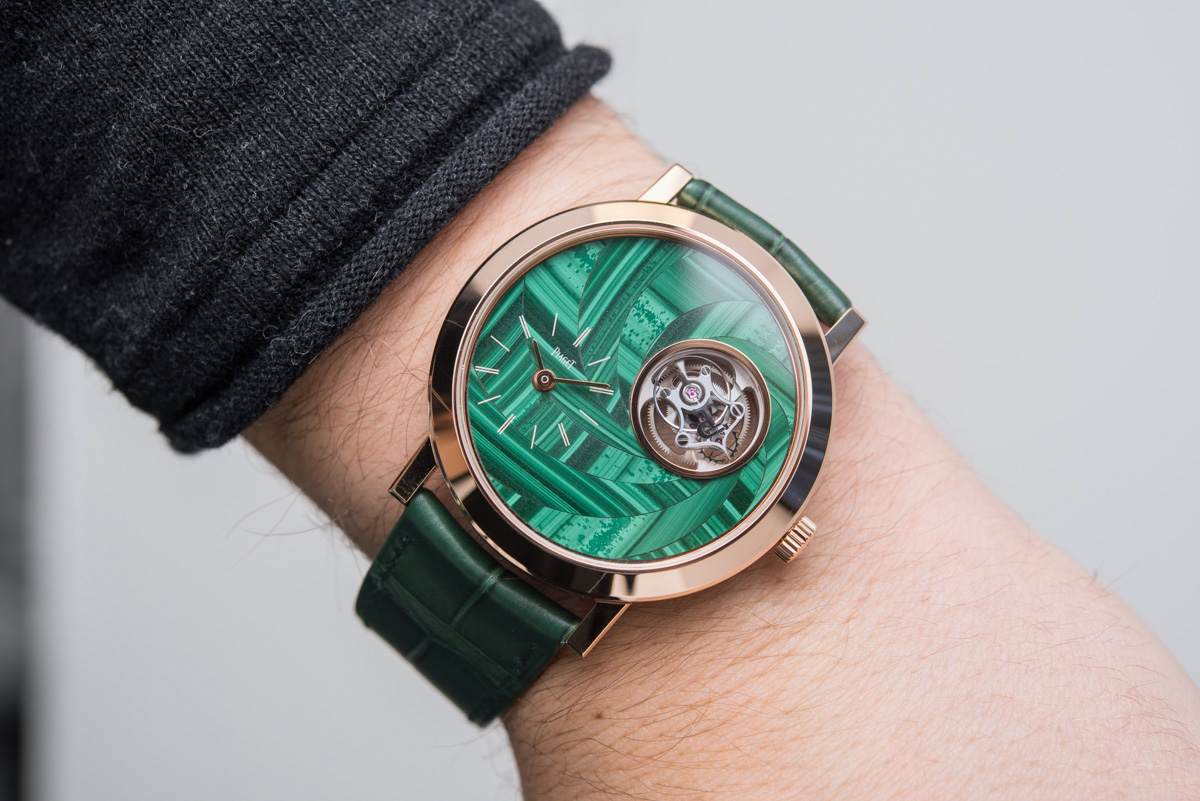
The new Piaget Polo S and Polo S Chronograph watches are significant for the brand because, first, their designs are more appealing to younger viewers, and second, they’re considerably less expensive than Piaget’s more typical ultra-thin and dressy watches. So it is with these thoughts in mind now I check out the newest Piaget Polo S Chronograph watch in addition to the Polo S Chronograph in black ADLC using a rubber band, the non-chronograph version of which we also covered.Before I discuss the Polo S Chronograph watch, it is well worth doing a fast recap of this new Piaget Polo S watches. But perhaps more importantly, the design of the new watches has created a lot of chatter online, largely due to their similarity to Patek Philippe’s Nautilus and Aquanaut. But I think that is mainly because most individuals are oblivious of Piaget’s earlier Polo watch in the late ’70s. If you’re familiar with the classic Polo, you’ll immediately see that the new Polo S watches have more in common with the vintage Polo compared to Patek Philippe’s Nautilus and Aquanaut.That stated, I won’t deny that there are similarities between the Polo S along with the two similar-looking Patek Philippe game watches, however, in the flesh, the Polo S has a far more distinctive design than what media photos would suggest. In any event, both of these models provide a comparatively value-priced offering that is a notch above options from Omega and Rolex and are competitive with pieces like the Nautilus, Overseas, Royal Oak, etc.The Piaget Polo S Pen comes at a 42mm stainless steel case and steps 11.4mm thick. These are fairly typical dimensions for a modern luxury sports chronograph.
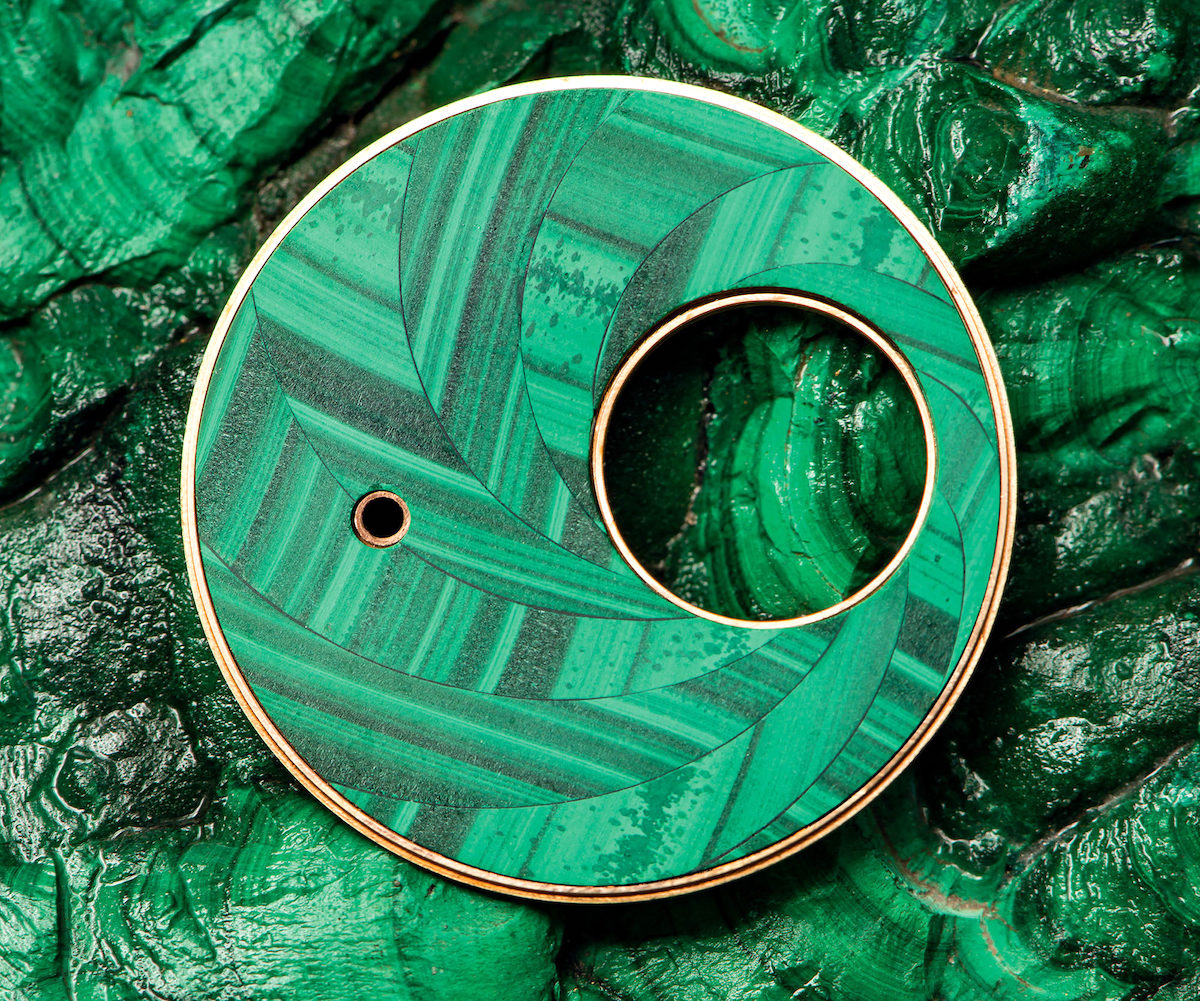
Wrapped in a 41mm wide, perfectly round polished ribbon of rose gold, with its narrow, straight lugs and slender profile, the exterior of this green dialed Altiplano works more as a carefully picked frame of an exquisite painting than something that would carry much visual weight or importance in its own right. I’m sure there’s a great article somewhere out there about how picking the wrong frame can destroy the viewing pleasure of the finest of paintings, and I’m also sure what’s been said there applies to this watch case just the same.
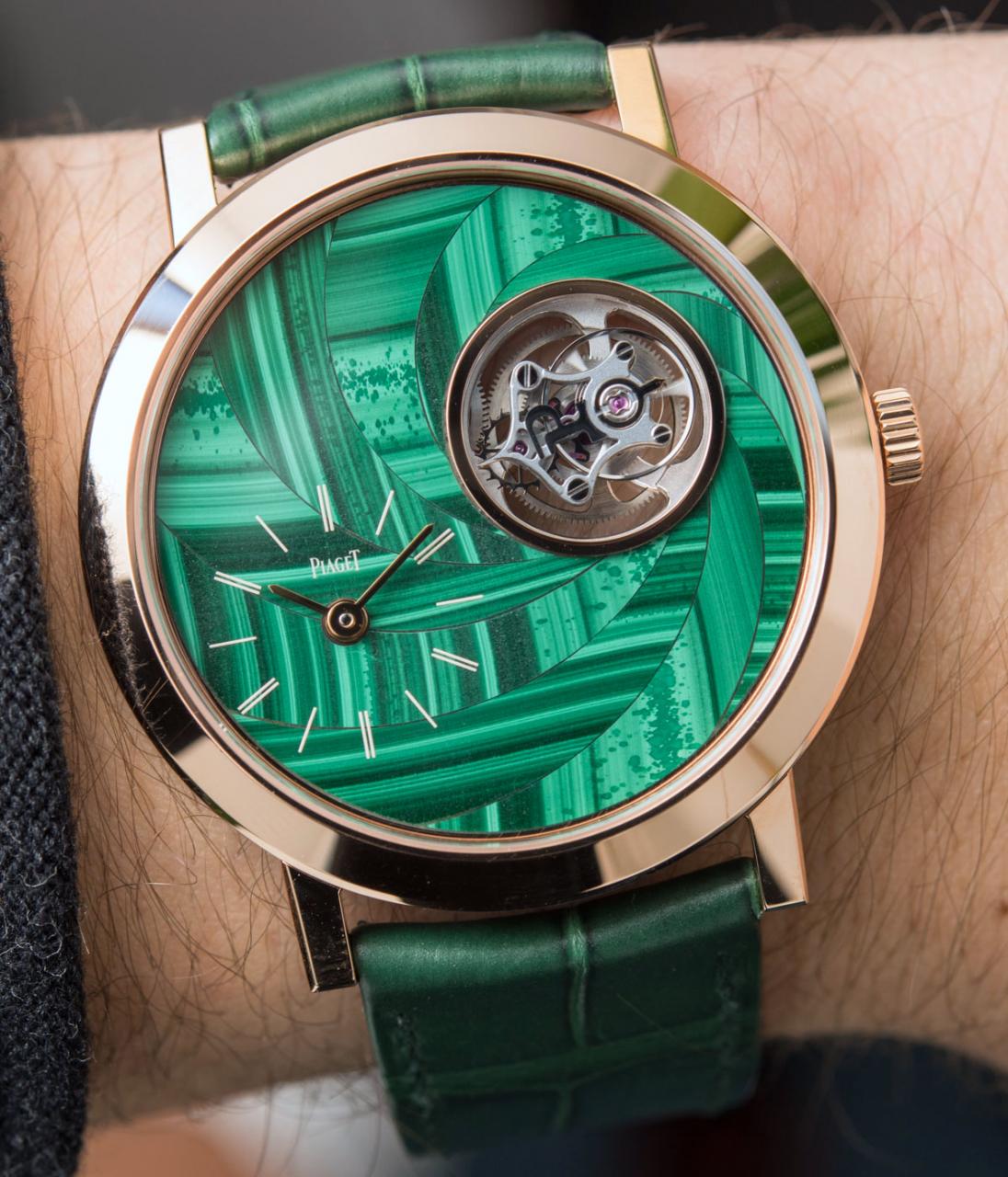
The Altiplano really shines in this setting much more so than when paired with some of the dull, more basic dials that Piaget offers further down the Altiplano food-chain. It is only now that I realize how for years I’ve been trying to “get” the Altiplano but it never once came together how this one does – there finally is a perfect balance between dial and case, not just proportions-wise, but also in textures and colors and so on.
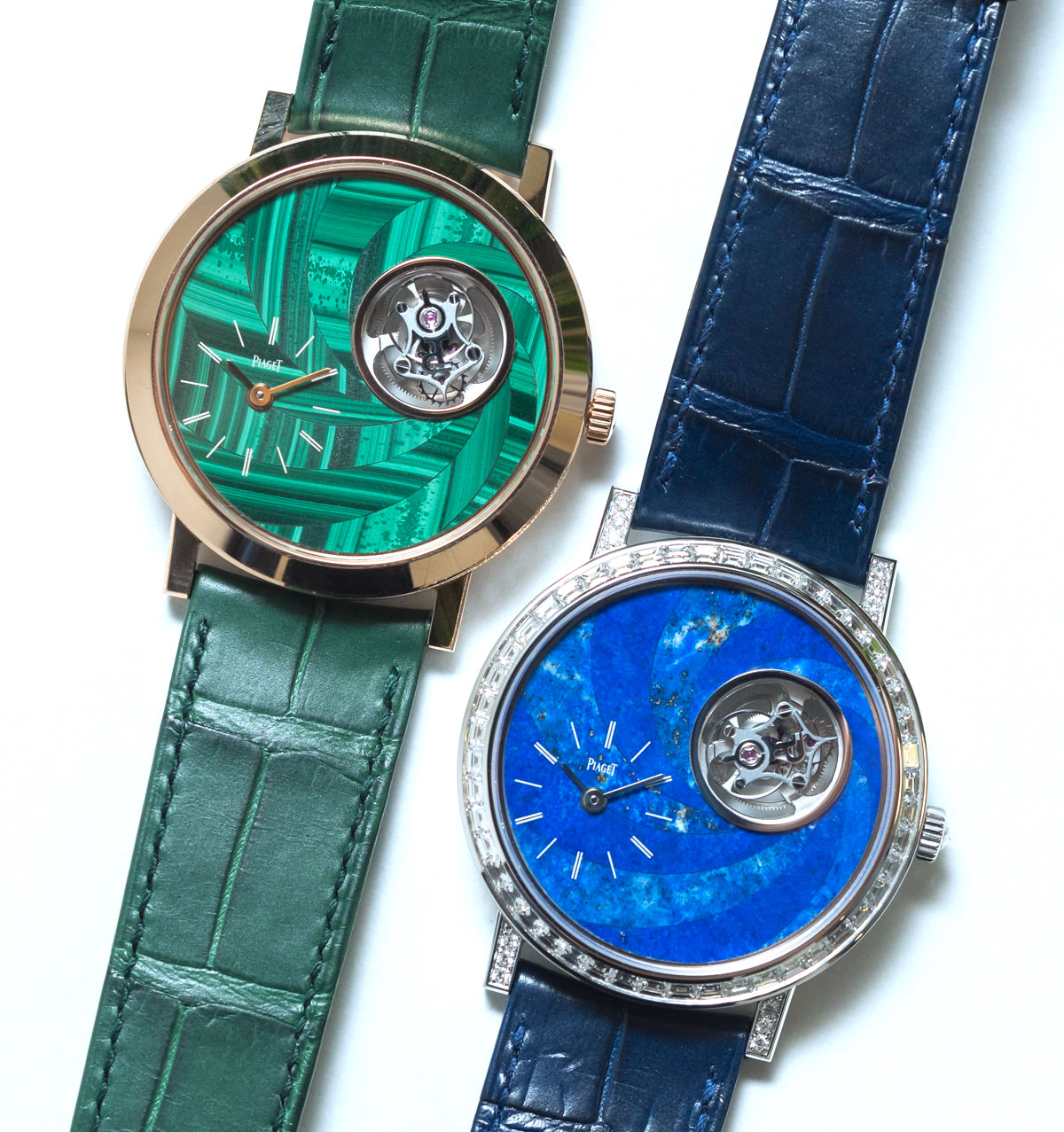
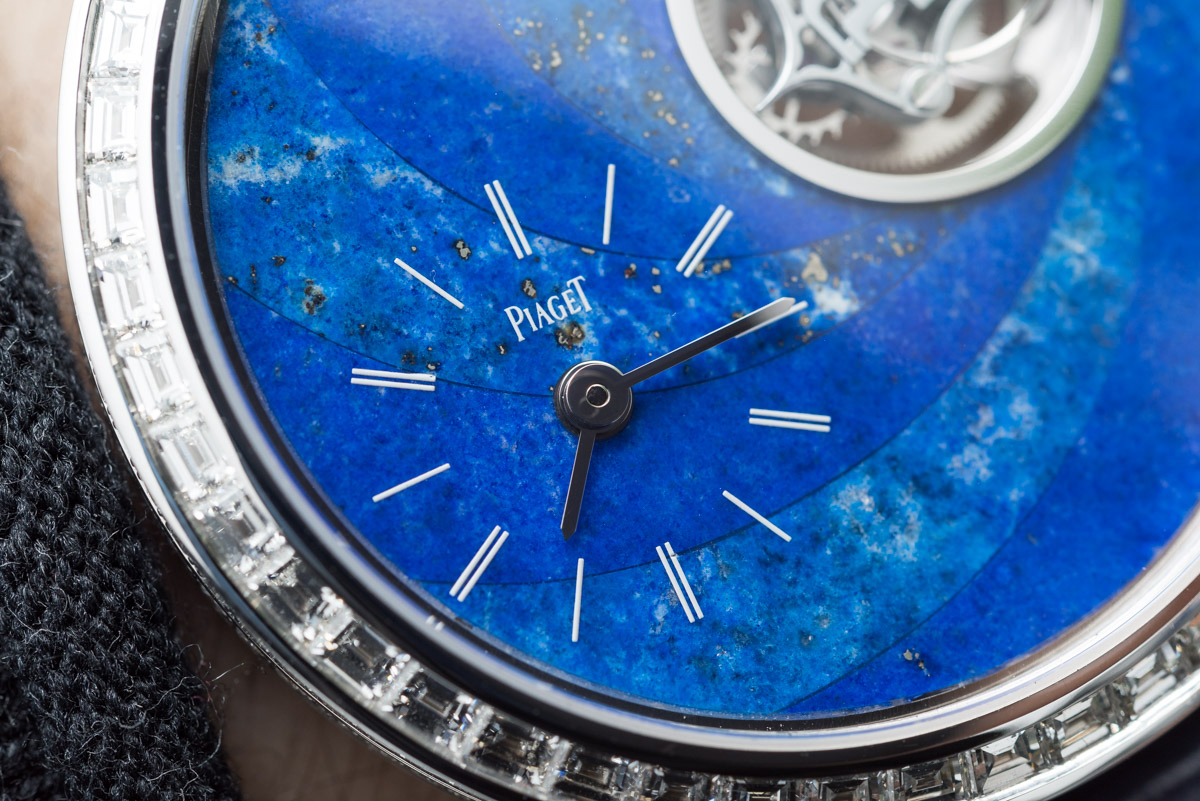
The dial is by all means the party piece of this Piaget Altiplano Flying Tourbillon, something that holds true even when seen live in person. The ticking and turning of the tourbillon can’t keep up with the infinite pattern of vibrant shades of green and black. It’s produced by Hervé Obligi, a multi-talented artist – exactly the sort more brands should credit when they take his work and stamp their own names on it, like, to its credit, Piaget did in their official documentation of the watch as well as when presenting it to me at SIHH. When it’s an in-house know-how of a brand that passes it on to its workforce of more than 1, I’m much more willing to accept that said production technique belongs to the brand – but when it’s just 1 person producing this sort of work, as it often is, they do deserve the credit Piaget gave here.
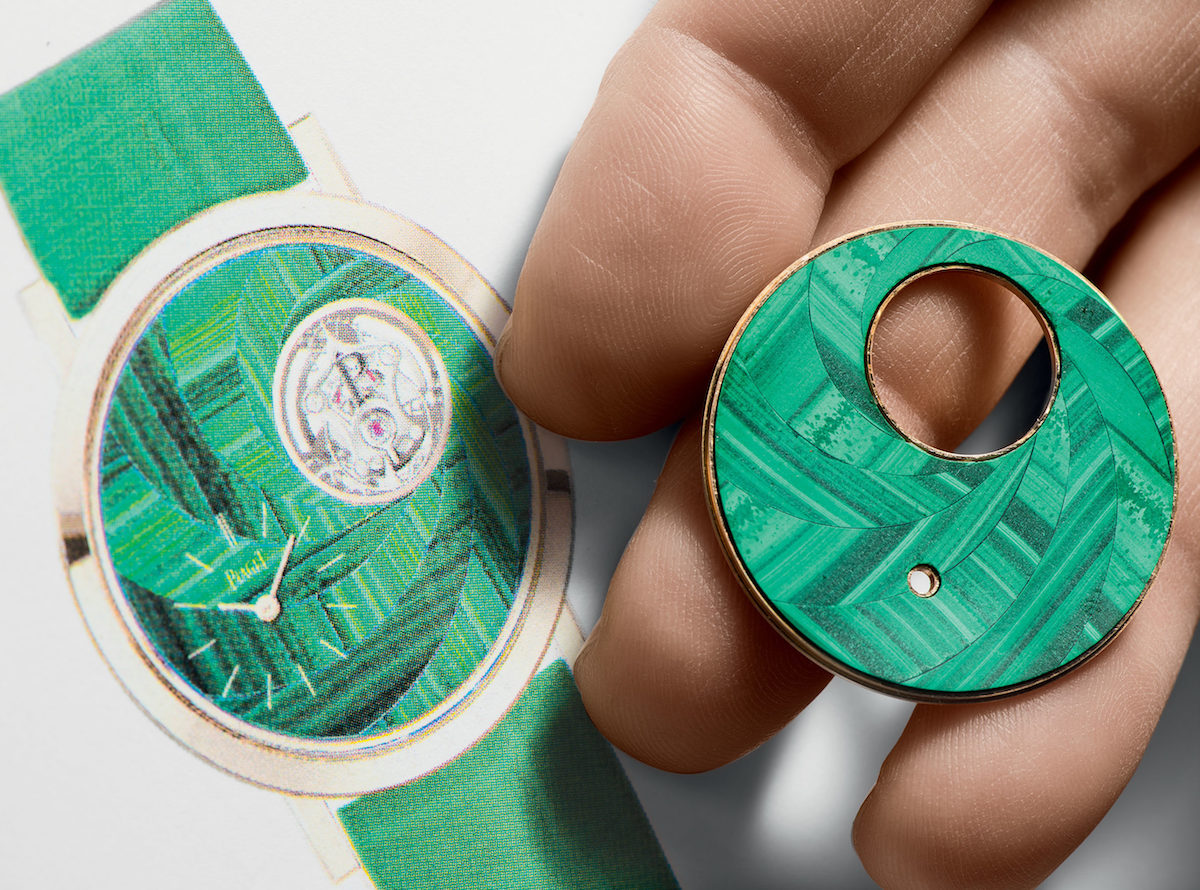
Produced with a miniature marquetry technique over the course of 2 to 3 weeks, the green malachite or blue lapis lazuli dials form a spiral pattern from the way the individual pieces are cut, and then a series of other patterns that come both from the individual pieces of stones and their orientation. The way the parallels and perpendiculars work would be refreshingly impressive even in a printed or guilloché dial, but here, made up by what appears to be impossibly thin and fragile pieces of stones, it’s just on another level.
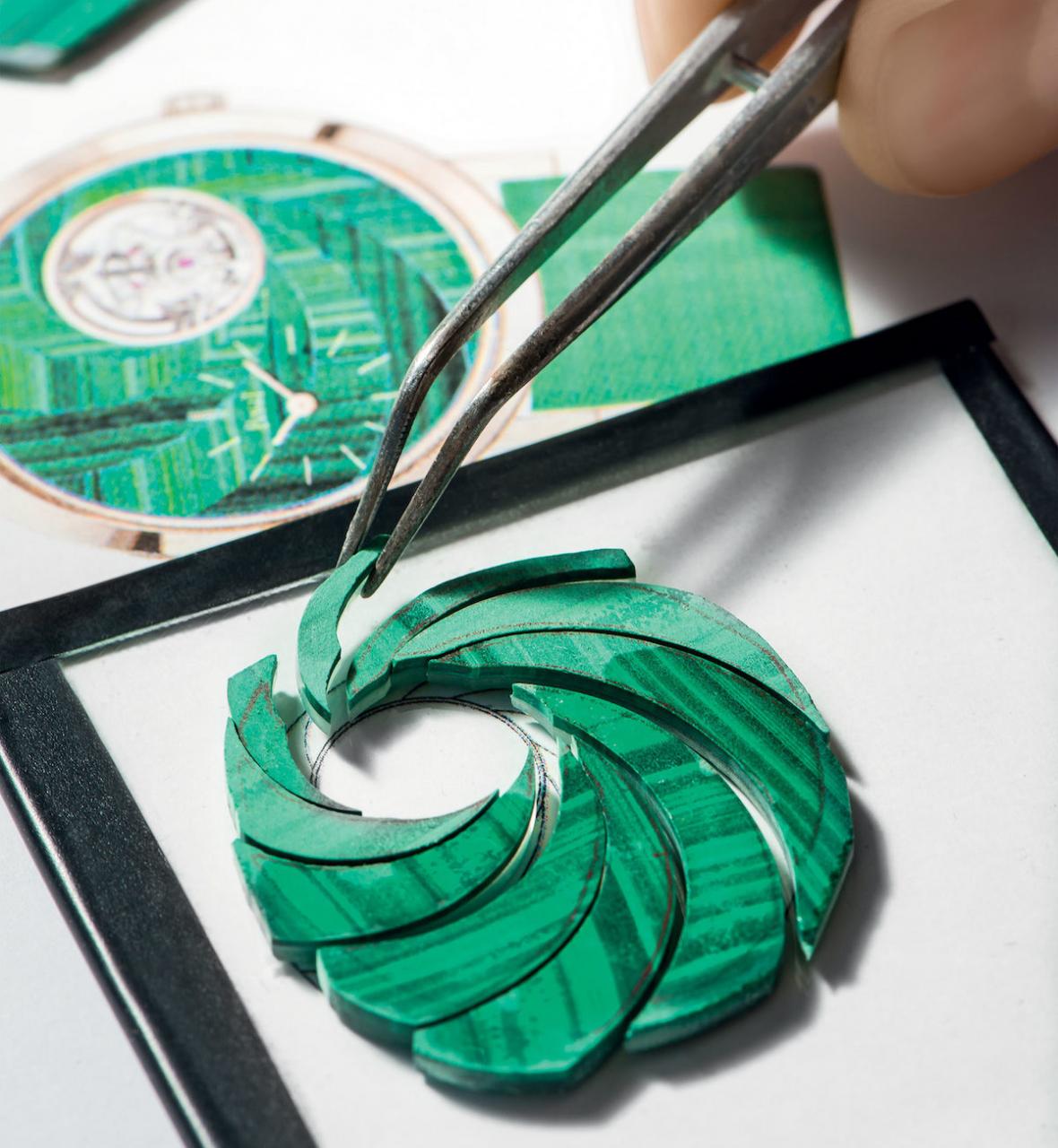
As Obligi explained: “One of the hardest challenges is to make the color of the stone truly vibrant by creating graphic effects on such a small surface.” The contour of each element is precisely traced on the stone using a pointed brass tool. The plate is cut into extremely thin strips using a tiny bow saw composed of a hazel tree branch and an abrasive-coated steel wire. Once cut out, the elements are adjusted and assembled with neighboring components. The facing thus composed is affixed to a smooth red or white gold surface before heat gluing the joints by filing the empty space between the bevelled edges with pine resin.
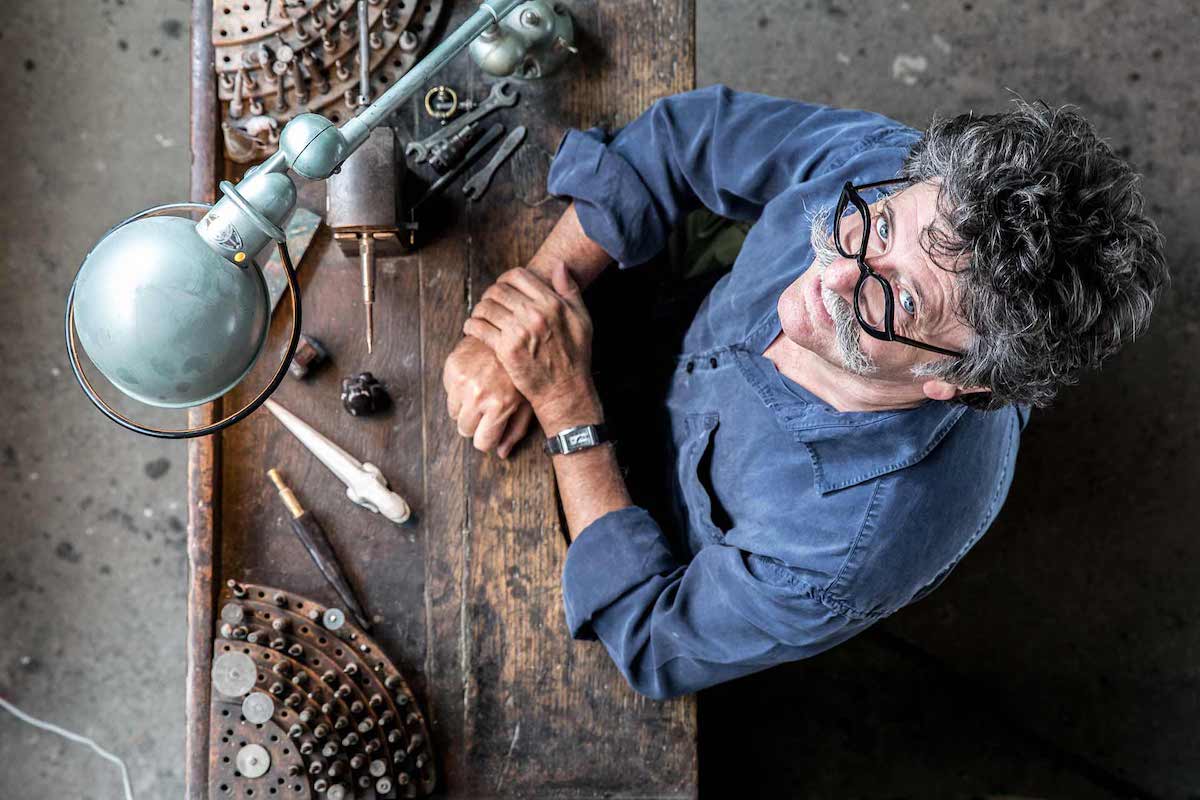
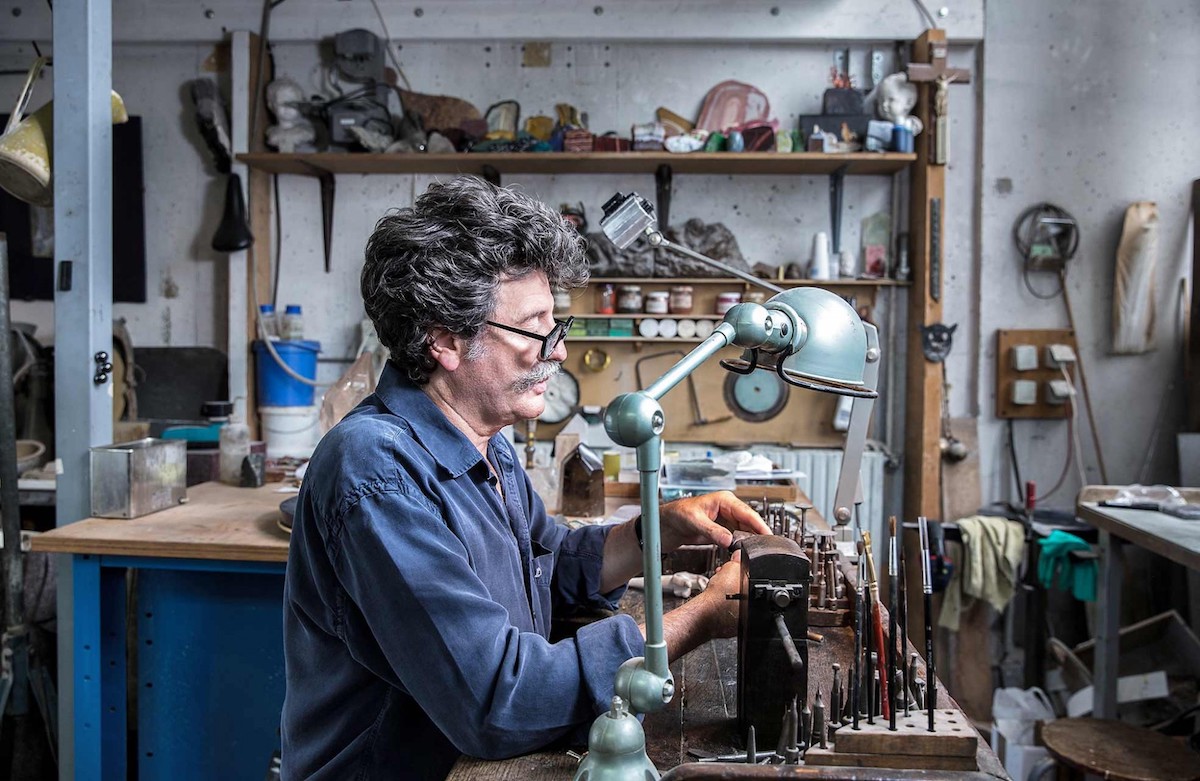
Hervé Obligi. Portrait shots by juliencresp.com
This truly is the sort of work that is impossible to expedite and automatize – it takes immense expertise to pick the right stone to begin with, choose the correct bits and pieces of it and then machine, retouch, fine-tune and assemble it into a whole that looks so natural as though these random pieces of stone were always meant to fit this way. Beyond the sheer quality of execution, it is this entirely natural and unforced look that commands appreciation. I am not surprised there’s just one guy who does these for Piaget.




